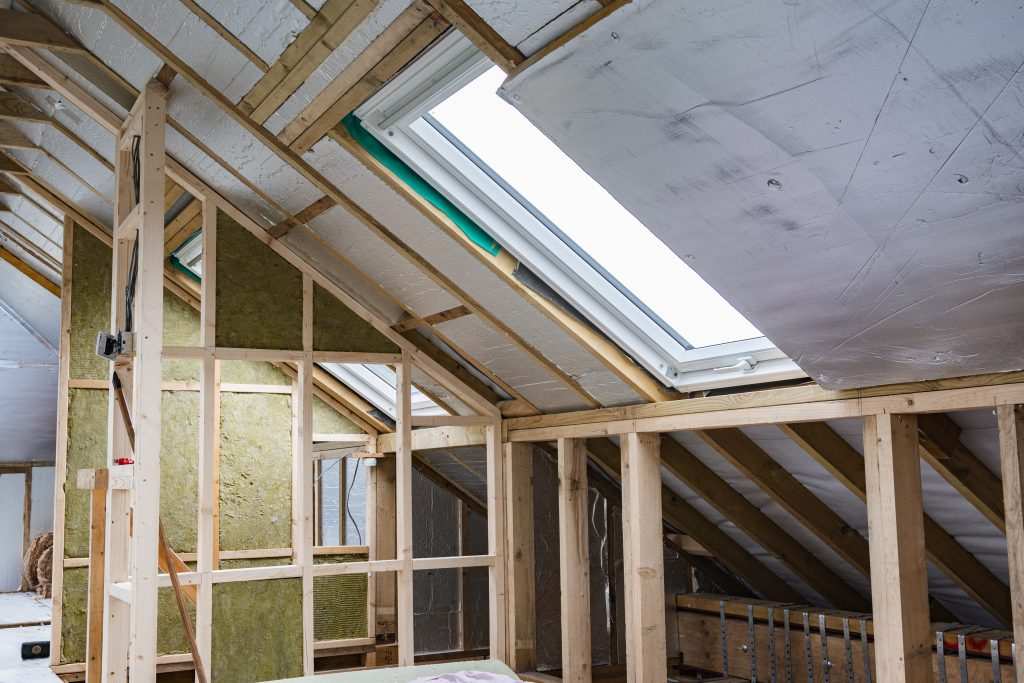Insulating one’s loft is a crucial step towards achieving both financial and environmental sustainability.
Loft insulation serves as an excellent means to trap heat, making the home warmer during those chilly winter months while reducing the energy bill.
This blog aims to elucidate various aspects of loft insulation, particularly focusing on its importance during a loft conversion.
Why? Because a well-insulated loft not only brings about a significant reduction in energy costs but also adds a layer of comfort to your newly created space.
The Importance of Loft Insulation During a Loft Conversion
When it comes to loft conversions, insulation isn’t merely an afterthought; it’s an essential element of the project. Insulating the loft is especially crucial as lofts are susceptible to both heat loss and heat gain due to their position at the top of the house.
A properly insulated loft conversion can bring down your energy costs considerably while helping you maintain a comfortable indoor environment.
Additionally, it aids in reducing your home’s carbon footprint, as less energy is needed to maintain a comfortable indoor temperature, thereby mitigating your contribution to greenhouse gas emissions.
Types of Loft Insulation for Loft Conversions
Insulating a converted loft offers several options, each with its advantages and disadvantages.
Blanket insulation is commonly used for its ease of installation and effectiveness. Made of rolls of fibreglass or mineral wool, this type is often laid between and over the joists of the loft floor.
Sheet insulation consists of rigid boards and is more suitable for sloping roofs, a feature commonly found in loft conversions.
Loose-fill and blown-fibre insulation types are less common for loft conversions but might be suitable for tricky, hard-to-reach areas.
The key is to choose an insulation type that aligns well with the specific requirements of your conversion project.
How Loft Insulation Works
The science behind loft insulation is fairly straightforward. Insulating materials work by trapping tiny pockets of air. These pockets slow down the movement of heat, making it more difficult for it to escape from or enter the house.
This way, the loft space remains warm during winter and cool during summer.
Thermal conductivity and R-values are the technical terms used to measure an insulating material’s effectiveness. A lower thermal conductivity and a higher R-value usually signify more effective insulation, which is essential to know when selecting materials for your loft conversion.
Installation Process During a Loft Conversion
When you’re converting a loft, the insulation will typically be installed during the construction phase, often between the placement of the structural elements and the finishing touches like internal walls and flooring.
A professional team will generally handle the installation to ensure it meets building regulations and performs optimally.
The insulation can go between the rafters or a secondary layer may be added over them, depending on the type of insulation chosen.
In conversions, where the roof shape might be complex, more specialised techniques may be employed to make sure every nook and cranny is insulated.
Cost Analysis
The cost of installing loft insulation can vary depending on the type of material, the complexity of the loft conversion, and labour charges.
While the upfront cost can be significant, it is essential to consider the long-term benefits.
Well-insulated homes can save a considerable amount on energy bills, making the investment a financially savvy move.
Payback periods can range from a few years to a decade, but once the insulation is in place, the benefits are long-lasting.
FAQs
- How often should loft insulation be replaced?
- Most high-quality insulating materials have a lifespan of 20-40 years. If you’ve recently converted your loft, it’s unlikely you’ll need to worry about this for quite some time.
- Is it possible to have too much insulation?
- Over-insulating can sometimes lead to issues like reduced ventilation, but this is generally not a problem with professionally installed loft conversions, as experts will take into account the necessary balance between insulation and ventilation.
- Can loft insulation cause dampness?
- If poorly installed, insulation can potentially trap moisture, leading to damp conditions. However, a professional installation will include appropriate vapour barriers and ventilation to avoid this issue.
Conclusion
Loft insulation, particularly during a loft conversion, is an indispensable element that offers both immediate and long-term benefits.
Not only does it make your new space more comfortable, but it also contributes to long-term financial savings and a reduced carbon footprint.
Given its advantages and the variety of materials available, insulating your converted loft is an investment worth making.
So, as you go about planning your loft conversion, remember that a well-insulated loft is a warm, comfortable, and cost-effective loft.
Get in touch today if you are interested in a loft conversion.





